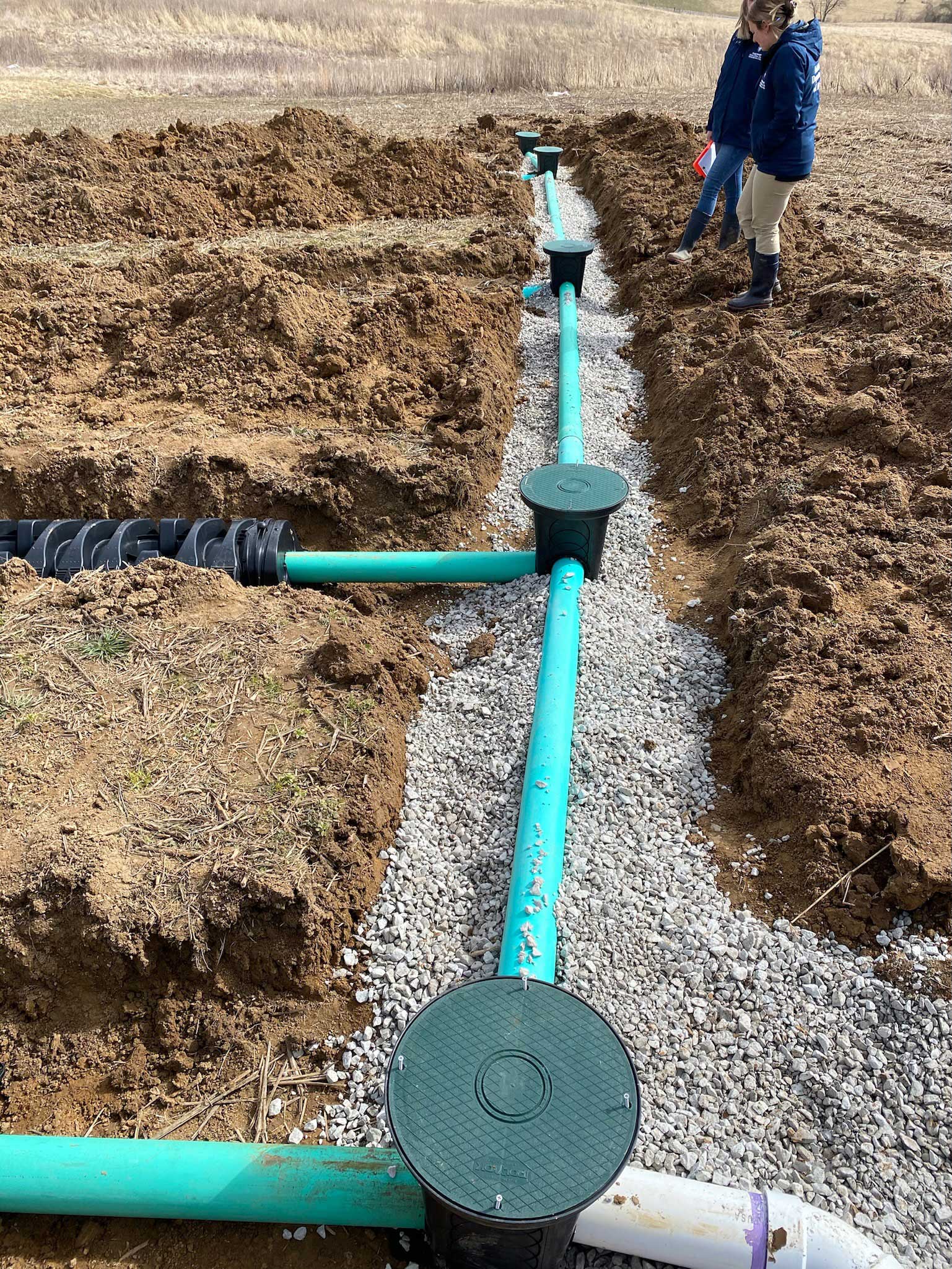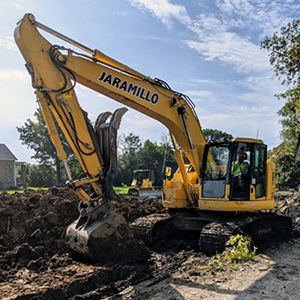Economical Lancaster Excavation - Quality Excavation at Competitive Rates
Economical Lancaster Excavation - Quality Excavation at Competitive Rates
Blog Article
In-Depth Exploration: The Scientific Research Behind Superior Excavation Practices
The realm of excavation practices is a domain name where science intertwines with craftsmanship to discover the mysteries hidden underneath the planet's surface area. From old hand tools to contemporary hydraulic excavators, the development of excavation strategies has actually been a testimony to human ingenuity and technical improvements. However, what really sets remarkable excavation techniques apart is a deep understanding of geological concepts, coupled with the use of cutting-edge devices and methodologies. By exploring the scientific research behind these methods, we can uncover the keys that exist under our feet and appreciate the accuracy and knowledge that enter into every dig.
Evolution of Excavation Techniques
Throughout history, the development of excavation strategies has played an important function ahead of time construction practices and archaeological explorations. From the rudimentary devices utilized by our ancestors to the advanced equipment used in contemporary times, the development of excavation techniques has considerably changed just how we come close to different tasks.
In old times, manual work with standard tools such as shovels, pickaxes, and wheelbarrows was the primary approach of excavation. This labor-intensive process limited the depth and extent of excavations, usually resulting in sluggish progress and restricted accessibility to certain sites. Nonetheless, as worlds advanced, so did the tools and methods made use of for excavation.
The Industrial Change noted a transforming point in excavation exercise with the introduction of steam-powered equipment. This innovation transformed the field, permitting faster and much more considerable excavations. In contemporary times, innovation plays a pivotal function in excavation, with innovations like general practitioner systems, drones, and 3D scanning enhancing precision and effectiveness in the area. The development of excavation strategies proceeds to shape the way we construct, discover, and comprehend the world around us.
Duty of Technology in Excavation

The combination of sophisticated innovation has basically reinvented the field of excavation, improving precision and effectiveness to unprecedented degrees. Among the vital technological innovations that has significantly influenced excavation techniques is the utilization of GPS systems. These systems permit for specific mapping of excavation websites, enabling operators to precisely find below ground energies and frameworks. Furthermore, making use of telematics in excavation tools has made it possible for real-time surveillance of equipment performance, leading to aggressive maintenance and increased operational performance.
In addition, the development of 3D modeling and simulation software has streamlined the planning process for excavation jobs. Designers and drivers can now imagine the whole excavation process before damaging ground, optimizing and determining possible challenges workflow. Along with this, the execution of drones in excavation activities has actually facilitated airborne surveys, volumetric dimensions, and website examinations with unequaled speed and precision.
Geological Concepts in Excavation
An understanding of geological principles is necessary for guaranteeing the architectural honesty and stability of excavation websites. Geological aspects play a vital role in figuring out the feasibility and security of excavation jobs (septic ohio). view it One vital geological principle to think go now about is the kind of dirt or rock present at the website. Different soil types, such as crushed rock, sand, or clay, have varying degrees of security and call for various excavation methods. Cohesive soils like clay may require additional assistance to prevent collapses, while sandy soils may be susceptible to disintegration during excavation.
Moreover, the geological structure of the location, consisting of mistakes, cracks, and rock developments, have to be carefully examined to recognize potential threats and challenges. Digging deep into near geological fault or unsteady rock developments can result in instability and possible risks. By conducting thorough geological studies and analysis, designers and excavators can establish methods to mitigate risks and make certain the effective completion of excavation projects. Eventually, incorporating geological concepts into excavation practices is vital for attaining secure, reliable, and sustainable results.

Most Current Tools for Excavation
In the realm of excavation practices, modern innovations in tools have revolutionized the performance and accuracy of excavation processes. One of the most up to date tools making waves in the market is making use of drones geared up with innovative imaging modern technology. These drones can supply comprehensive airborne studies of excavation sites, providing real-time information on topography and prospective threats. This details help in better preparation and decision-making during the excavation procedure.
Another cutting-edge tool getting popularity is the implementation of 3D printing technology for creating custom excavation devices. This enables the production of specialized tools that are customized to the certain needs of a job, enhancing efficiency and reducing downtime.
Furthermore, improvements in materials scientific research have actually resulted in the advancement of stronger and much more sturdy excavation devices. dump truck companies in ohio. Tungsten see this page carbide-tipped excavator add-ons, for instance, offer remarkable performance in difficult ground problems, improving efficiency on-site
Scientific research's Effect on Excavation Practices

Furthermore, developments in products science have actually caused the development of more powerful, much more long lasting excavation devices and devices. For example, making use of composite products in shovels and miners has actually enhanced their performance and long life, ultimately raising performance on excavation websites. Additionally, scientific research study on soil mechanics and geotechnical engineering has actually offered valuable understandings into dirt habits, enabling excavation professionals to make enlightened choices pertaining to excavation approaches and soil stablizing methods. In general, scientific research continues to drive technology and renovation in excavation practices, making excavation jobs much more effective, cost-effective, and sustainable.
Conclusion
In final thought, the development of excavation methods has been considerably affected by improvements in modern technology and a deeper understanding of geological concepts. The current tools and devices made use of in excavation have actually boosted performance and accuracy in the area. The application of clinical understanding has significantly boosted excavation techniques, leading to more sustainable and effective techniques for digging deep into various kinds of materials.
In the realm of excavation techniques, contemporary innovations in devices have actually revolutionized the efficiency and precision of excavation processes. By leveraging clinical concepts, the excavation sector has been able to substantially improve performance, accuracy, and safety in excavation procedures. GPR enables excavation groups to non-invasively check and map subsurface frameworks, energies, and possible threats, enabling them to plan excavation projects with greater precision and decreased risk of crashes.
In addition, scientific research on soil auto mechanics and geotechnical design has actually offered important understandings right into dirt behavior, allowing excavation experts to make enlightened decisions relating to excavation techniques and soil stablizing methods. In general, scientific research proceeds to drive advancement and improvement in excavation methods, making excavation jobs extra reliable, cost-effective, and lasting.
Report this page